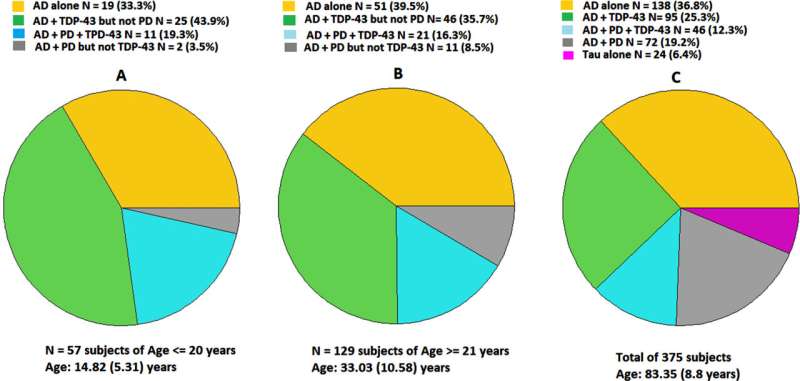This article has been reviewed according to Science X's editorial process and policies. Editors have highlighted the following attributes while ensuring the content's credibility:
fact-checked
peer-reviewed publication
trusted source
proofread
Opinion: Air pollution, neurodegeneration, neuropsychiatric, and neurodevelopmental disorders

An opinion paper published by University of Montana professor Lilian Calderón-Garcidueñas MD, Ph.D. and co-authors, Dr. Alberto Ayala and Dr. Partha Mukherjee discussed ow US citizens are not fully aware of the harmful brain impact of exposures to ubiquitous anthropogenic combustion emissions and friction-derived nanoparticles, industrial nanoplastics, wildfires and smoke plumes of soot.
The researchers have significant experience with the development of pediatric and early adulthood hallmarks of Alzheimer, Parkinson, FTLD and ALS and associations with neuropsychiatric and neurodevelopmental disorders in populations exposed to concentrations of fine particulate matter PM 2.5 above the current 9μg/ m3 USEPA annual standard.
Although the USEPA has a new 9.0 μg/m3 PM2.5 annual standard, these measurements are still above the World Health Organization (WHO)guidelines of 5 μg/m3 and strikingly, significant air pollution exposures disparities will persist and increase, affecting mostly people in lower income brackets, with reduced access to health care, and high occupational exposure risks.
Dr. Calderón-Garcidueñas comments that with the new PM 2.5 standard de facto, millions of US residents will be living in PM2.5 non-attainment regions and in addition, society must deal with the tiniest particles, so called ultrafine particulate matter UFPM and industrial nanoparticles NPs exposures because their ability to cross all biological barriers, reaching the brain and other critical organs (i.e., the heart).
This fraction of PM2.5 has strong neurodegenerative/neurobehavioral/brain structural associations. The early development and progression of Alzheimer's and Parkinson's diseases and FTLD and ALS already killing thousands of Americans—should raise red flags about the need to understand this serious potential UFPM and NPs risk to urban and rural US populations.
Dr. Calderón-Garcidueñas who trained at the EPA in Chapel Hill, North Carolina while a Toxicology doctoral UNC student stated, "We all should be aware that under lifetime exposures to PM2.5 above safe thresholds, the relentless development of Alzheimer, Parkinson and TDP-43 pathology could be in place and emphasized that wildfires are particularly worrisome in terms of exposure of PM2.5 to thousands of citizens.
"From 2013 to 2022, an average of 7.2 million acres have burned annually and fires burned 2,633,636 acres in 2023. Unfortunately, humans were responsible for 89% of wildfires in the period 2018-2022."
The authors concluded that control of UFPM/NPs in ambient air, their atmospheric transformations, their industrial sources, wildfire prevention, education, and environmental management are critical.
US voters would like to be assured that a significant part of the 13 million projected AD cases for 2050, the current 1 million PD, the 60,000 FTLD and the 18,000 ALS cases could be avoided, and future generations be protected if our pollution reduction efforts are strengthened and accelerated.
A full report of Calderon's research is available through the Journal of Alzheimer's Disease.
More information: Lilian Calderón-Garcidueñas et al, 2024 United States Elections: Air Pollution, Neurodegeneration, Neuropsychiatric, and Neurodevelopmental Disorders. Who Cares?, Journal of Alzheimer's Disease (2024). DOI: 10.3233/JAD-231373

















